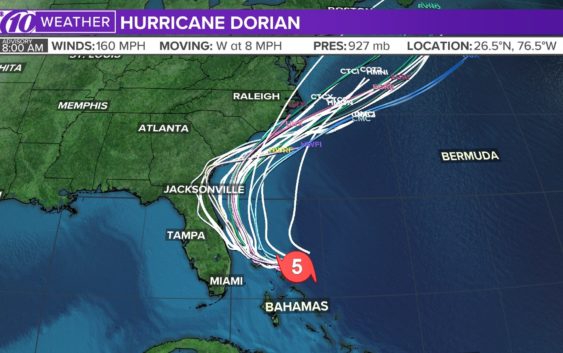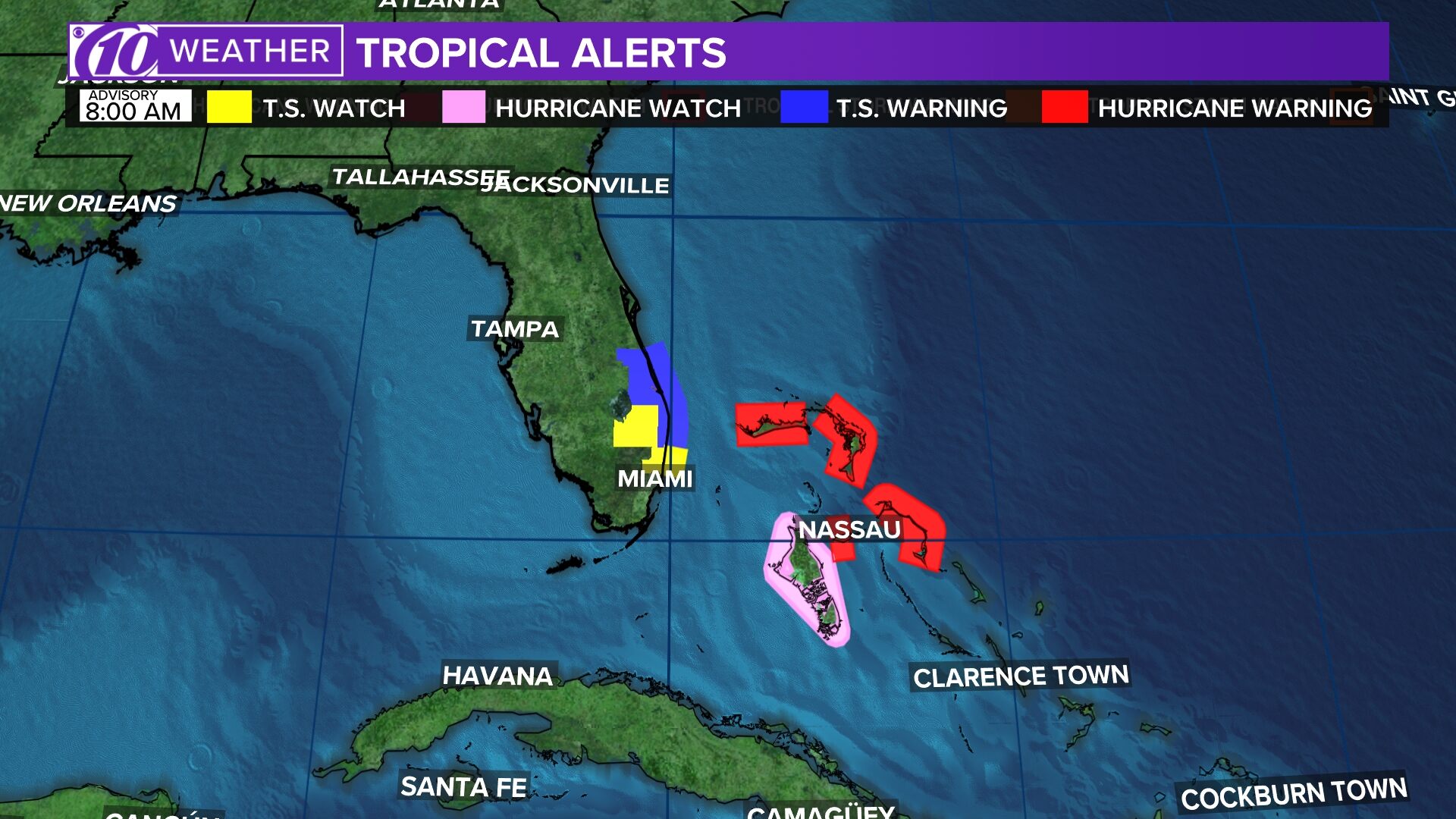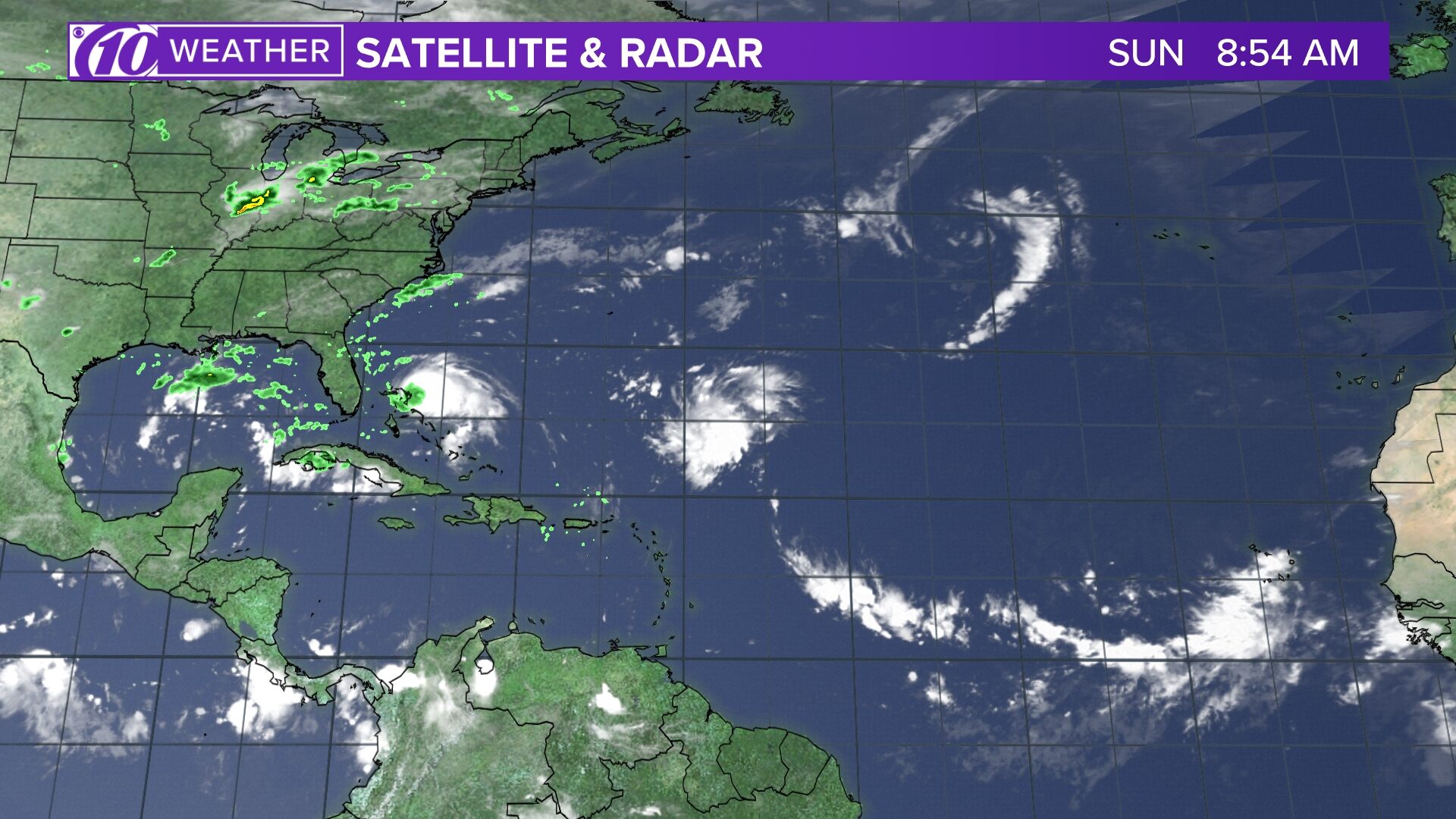- Fake job seekers are flooding the market, thanks to AI
- One set of evacuation orders lifted in Caldwell County after wildfire contained
- 'We gutted every building' | Chimney Rock rebuilding after Hurricane Helene
- 'We gutted every building' | Chimney Rock rebuilding after Hurricane Helene
- Debris from Hurricane Helene provides fuel, complicates containment for spring wildfires
Hurricane Dorian begins to inch to the northwest, as eyewall keeps pounding Bahamas

ST. PETERSBURG, Fla — People in parts of the northern Bahamas have been experiencing this for, quite literally, hours — nonstop: storm surge up to roofs and winds of at least an EF-2 tornado. But, relief may be coming.
The eye of Hurricane Dorian is beginning to inch toward the northwest, as it continues its hours-long assault on the islands. The latest data shows Dorian crawling at 1 mph with maximum sustained winds of 120 mph.
The Category 3 hurricane is about 110 miles east-northeast of West Palm Beach, Florida.
Grand Bahama continues to experience catastrophic winds and storm surge. Dorian first made landfall in Elbow Cay, Bahamas, around 12:45 p.m. Sunday with maximum sustained winds of 185 mph as a Category 5 hurricane. Hurricane Dorian’s falling wind speeds since then made it a Category 4 storm Monday morning. From there, it weakened further.
However, Dorian remains an extremely destructive storm.
The most reliable weather computer models have been consistent in keeping the powerful storm just off the Florida coast and away from landfall. These models, however, are not forecasts — and they tend to change with every update.
In fact, some models include parts of Florida’s east coast for significant impacts or a potential landfall.
LIVE BLOG: The latest, need-to-know information on Hurricane Dorian
The following watches and warnings are in effect:
- Hurricane warning: Grand Bahama and the Abacos Islands in the northwestern Bahamas, Jupiter Inlet to Ponte Vedra Beach
- Hurricane watch: North of Deerfield Beach to Jupiter Inlet, Flagler/North of Ponte Vedra Beach to South Santee River, SC
- Tropical storm warning: North of Deerfield Beach to Jupiter Inlet, north of Ponte Vedra Beach to Altamaha Sound Georgia
- Tropical storm watch: North of Golden Beach to Deerfield Beach, Lake Okeechobee
- Storm surge warning: Lantana to Savannah River
- Storm surge watch: North of Deerfield Beach to south of Lantana, Savannah River to South Santee River, SC
RELATED: What’s the difference between a hurricane watch and a warning?
The National Hurricane Center said hazards for the islands include powerful wind gusts and storm surge 12-18 feet above normal tide levels, with possibly higher waves.
Dorian’s apparent turn northwest is a positive forecast for the Tampa Bay region but one of most concern for Florida’s east coast because a slow, powerful storm that rides the coastline is likely to bring more prolonged and significant impacts. Florida is technically out of the cone of uncertainty in the latest hurricane track, but that definitely doesn’t mean the coast is out of the woods. And, people should continue to brace for the storm.
Again, stay tuned to the latest forecast as Dorian’s track and intensity become more certain.
►Track the weather and get severe alerts when they happen: Download the 10 News app now.
►Stay informed with all tropical weather: Check out our must-have interactive Hurricane Headquarters guide here.
Spaghetti models
Each line represents a computer model’s best “guess” of where the center of the storm will go. Together, they look like spaghetti noodles. Remember, impacts from a tropical system can and do occur miles away from the center.
App users — tap here if you cannot see the image below.
Tropical track
This is the latest “cone of uncertainty,” which shows an area where the center of the storm could go, when and how strong it might be at the given time.
App users — tap here if you cannot see the image below.

Satellite and radar
The latest satellite and radar image for the Gulf of Mexico, Caribbean Sea and Atlantic Ocean.
App users — tap here if you cannot see the image below.
Watches and warnings
What’s a watch? What’s a warning? Here are the official alerts that can be issued for your area and what you should do.
App users — tap here if you cannot see the image below.

